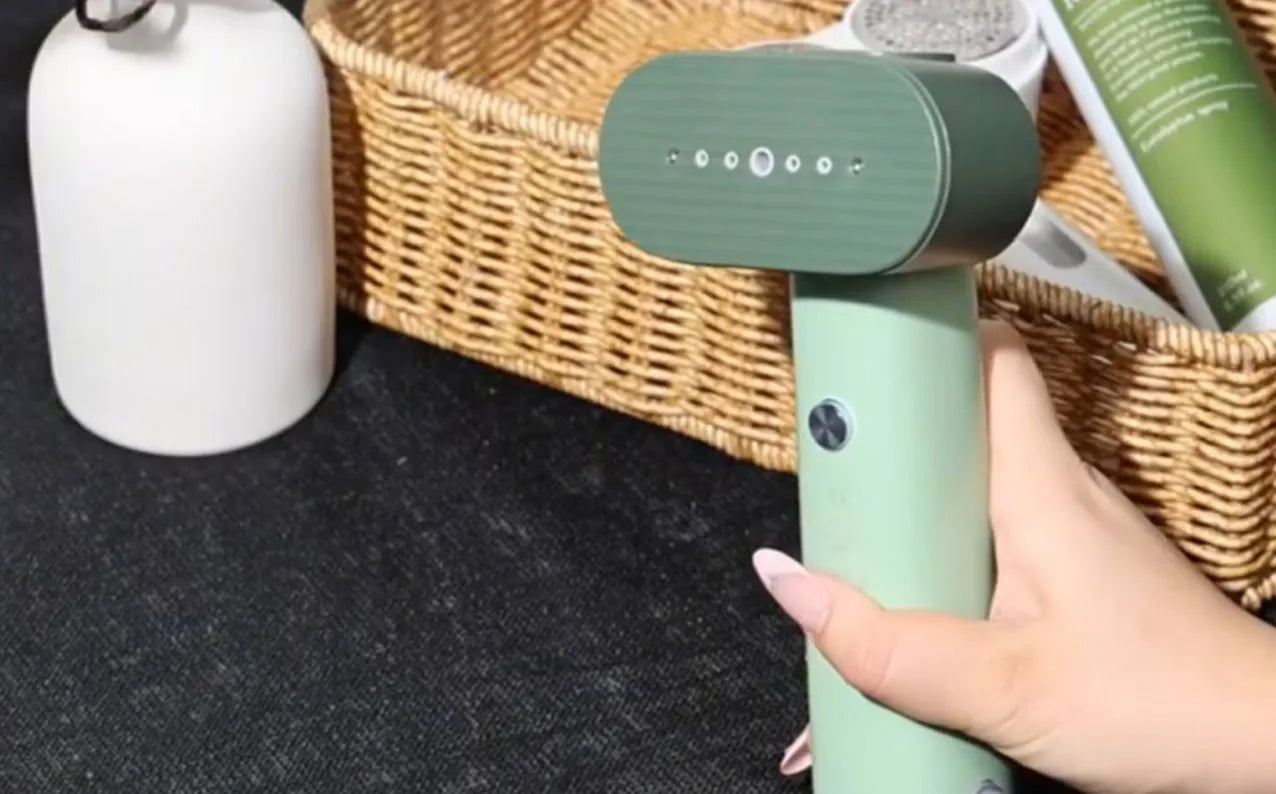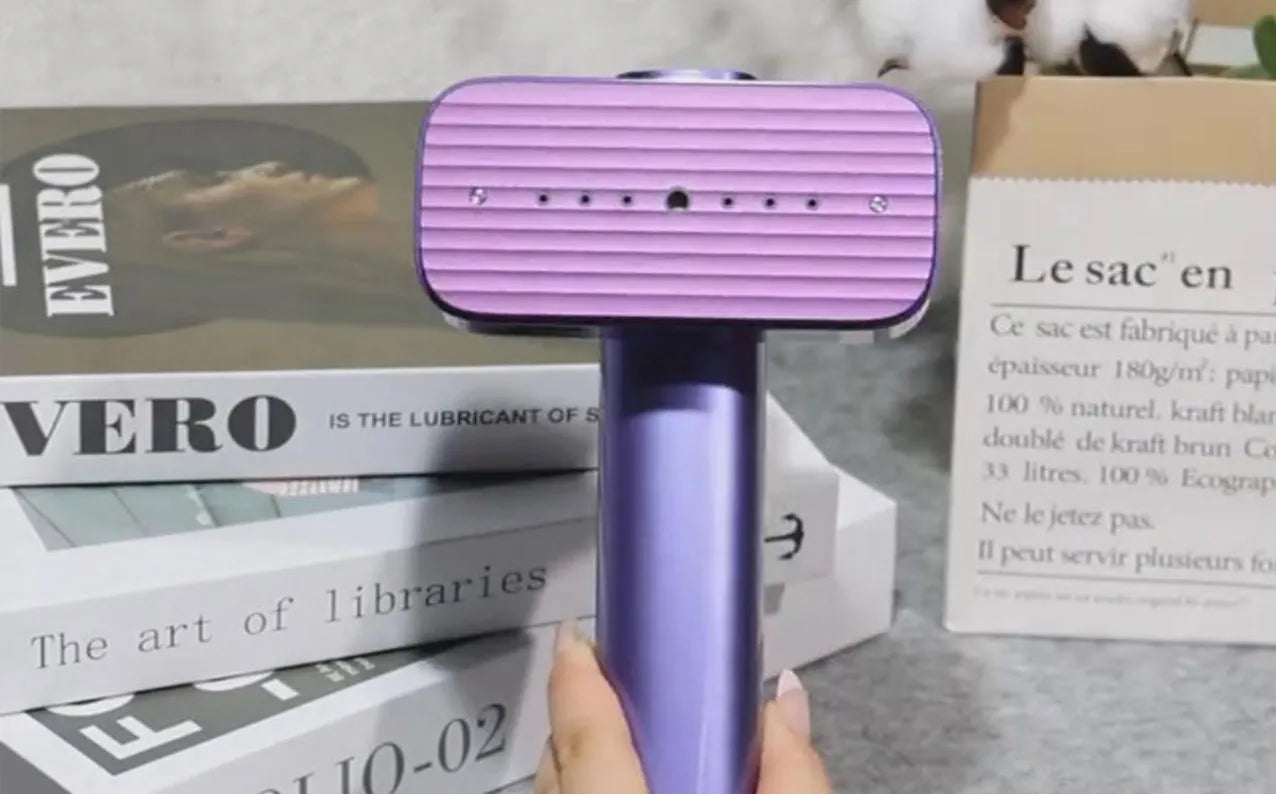I'm an event planner — and a small portable steamer for clothes has saved my day more times than I can count; it smooths fabric and, strangely, soothes nerves.
I have been involved in event planning for over a decade. Planning venues, staging scenes, coordinating vendors, and managing curveballs — it’s way messier than paperwork. On a single event day, from the set-up to the host, from the media to the guests, any minor visual flaw will be magnified - especially when it comes to clothing. As the person responsible for overseeing the details on-site, I have learned to carry a bunch of "emergency items" with me. Among those emergency items, the most underrated and reliable is a compact portable steamer for clothes.
A lot of people call it a business-traveler gadget — I thought the same until the night a groom’s coat arrived creased and the dressing-room iron died. Time was tight. With the clock ticking I pulled my little portable steamer for clothes from my bag; minutes later the coat looked pressed and the ceremony started without a hitch. Since then it’s come with me to every event — not just to remove creases but to keep the moment feeling held together.
Why is the portable steamer for clothes so important in the space of my toolbox?
Three words: speed, versatility, and ease of use.
Speed: Events rarely give you breathing room. A good portable steamer for clothes should be steam-ready in 10–30 seconds and smooth an outfit in a few minutes. Many modern models hit ready in about 15 seconds and steam long enough for quick on-site fixes — exactly what you need when time is short.
Versatility: Event textiles vary — suits, scarves, tablecloths, backdrop drapes. The portable steamer for clothes you rely on should work across fabrics, either with adjustable steam settings or by changing distance and angle. I’ve seen models, including lines from Nesugar, designed to be used at different angles — which helps when you’re working on a hanger, a drape, or a flat surface.
Portability: If it’s too heavy or bulky, it stays at the office. I aim for something around 0.7–0.9 pounds that fits in my kit — light enough to grab during setup but robust enough for several garments. Many travel-friendly models advertise features like being lightweight and handheld, but the real test is whether you actually reach for the portable steamer for clothes during the countdown.
The On-Site Operation Process I Usually Follow (The Practical 6-Step Method)
Hang up the clothes and check for stains: First, straighten the clothes and identify the areas that need special attention (neckline, cuffs, front part). If there are obvious stains, record them first. If necessary, have them dry-cleaned or cleaned locally.
Add water and preheat: I use filtered or distilled water to avoid scale. Don’t fill the tank to the brim — leave a little headroom — and let the portable steamer for clothes warm for 15–30 seconds as the manual says.
From top to bottom: Stand slightly below or to the side of the garment, spray evenly from top to bottom to avoid staying at the same spot for too long and causing wet marks. Keep a greater distance for lightweight fabrics and a closer distance for thick fabrics.
Technique coordination: One hand mists while the other gently pulls the fabric smooth — that pairing speeds the job and cuts down on drips.
Final check: Inspect the neckline, shoulders, cuffs and around buttons. If you need a quick touch-up, don’t hold the portable steamer for clothes on one spot — short bursts are safer for the fabric.
Cleaning and Maintenance: Empty the water tank after use (to prevent the accumulation of bacteria or scale over a long period of carrying water). Store it properly after cooling. Perform regular descaling over a long period of use. Multiple authoritative reviews also emphasize the importance of using distilled water and regular maintenance.
Fabric and Technique: Avoid the "Temperature Trap"
Different types of fabrics require different treatment methods. These are all the experiences I personally gained through on-site exploration.
Silk / True Silk: Hold the steamer close and move it gently over the fabric. Silk can lose its natural sheen if exposed to too much moisture or heat.
Wool / Cashmere: Keep the steamer near the fabric and give short bursts. Avoid holding the steamer in one spot to let the fibers fluff naturally.
Cotton & Blended Fabrics: These fabrics handle heat pretty well. I usually bring the nozzle closer. For dark-colored clothes or items that might show water spots, I tackle them in sections, letting them hang for a bit between passes to dry.
Functional Fabrics (Polyester/Nylon): I use short, gentle bursts of steam. This keeps the fabric from looking shiny and cuts down on static.
Tablecloths & Backdrops: I stretch the fabric out flat, steam it with the portable steamer for clothes, and then use clips or weights to hold it in place. This makes the surface much smoother.
All of these little tricks are lessons I’ve picked up on the job. In my experience, the way you hold the nozzle and how strong the steam is make the biggest difference when smoothing wrinkles with a portable steamer for clothes.
Travel Tips & Airport Carry-On
Empty the Tank: Airlines usually want devices drained. I always pour out the water before packing the portable steamer for clothes into a bag.
Voltage: For trips abroad, I pick a 100–240V model. If that’s not an option, I make sure I have a solid travel adapter.
Storage: I keep the portable steamer for clothes in an outer pocket of my luggage so I can grab it quickly, instead of digging through the bag.
What I Look for When Buying (From Years of Practice)
Preheat Time: If it takes longer than 30 seconds, I skip it. Around 15 seconds is perfect for quick touch-ups.
Battery Life: 8–12 minutes is usually enough for one or two garments. If I need to do more, I choose a portable steamer for clothes with longer runtime.
Weight & Size: 0.7–0.9 pounds works best for me—light enough to carry all day, but still solid to handle.
Steam Levels: Multiple settings are handy for delicate silk and thick fabrics alike.
Anti-Drip & Tank: A clear tank with a secure latch keeps leaks at bay and makes it easy to use on site.
Safety Features: Auto shut-off, dry-heat protection, and overheat safeguards are must-haves.
Common Problems & Quick Fixes
Weak Steam: First, I check the water level and for scale. Usually cleaning and a few runs with distilled water fix it.
Drips or Water Marks: Often caused by overfilling or tilting. Keeping it upright and tilting the nozzle slightly solves this.
Odor: New machines sometimes smell. Running a few empty cycles and airing it out usually works. If the smell lingers, I stop using it and contact support.
Using the Steamer On-Site
I treat it as a handy tool to keep backstage. I check in with the stylist ahead of time, schedule 10–15 minutes for “quick clothing fixes,” and always have a spare jacket ready just in case.
One time, before a live broadcast, the speaker dozed off in the car and his collar was wrinkled. I straightened the collar and sleeves in three minutes, and the show started on time with no one the wiser. Moments like that—handling little emergencies with a portable steamer for clothes—feel especially satisfying.
Choosing a Brand (Don’t Be Swayed by Packaging)
Steamers cost anywhere from $20 to $300. Price alone doesn’t tell the story. I check preheat speed, how long the steam lasts, drip protection, how it treats different fabrics, and safety. I rely on independent reviews to compare models.
I mention Nesugar because the quick heat-up and clear tank are genuinely useful at events. Still, the brand isn’t the main point—it’s about how you actually use the portable steamer for clothes day to day.
Three-Step Quick Decision Guide
Decide How You’ll Use It: Travel only or frequent event use? For events, battery and steam power matter most; for travel, portability and storage are key.
Focus on Core Features: Preheat time, continuous steam, anti-drip, voltage compatibility, and auto-off.
Practice at Home: Try it on different fabrics. Hands-on experience with a portable steamer for clothes is more useful than just reading the specs.






